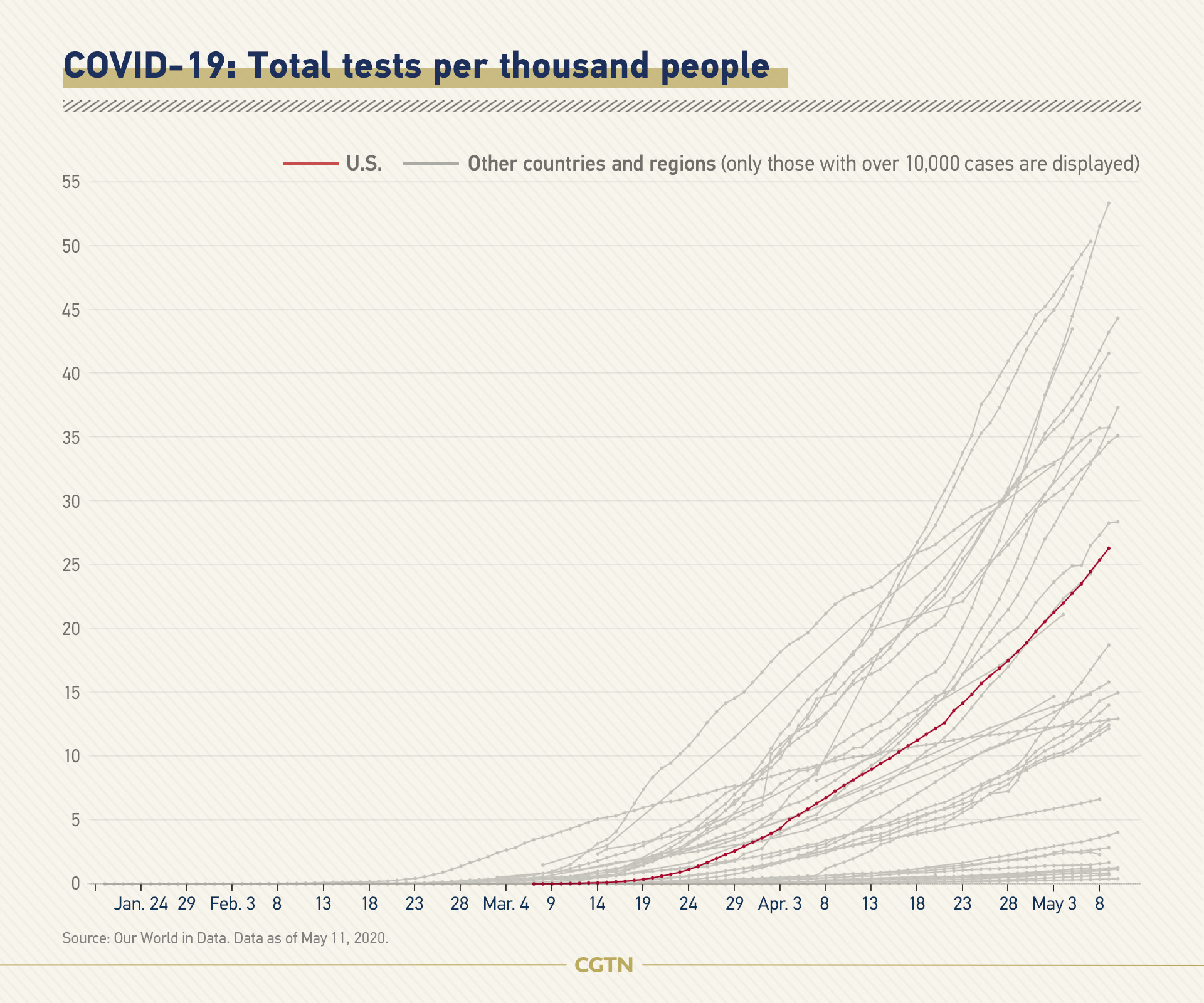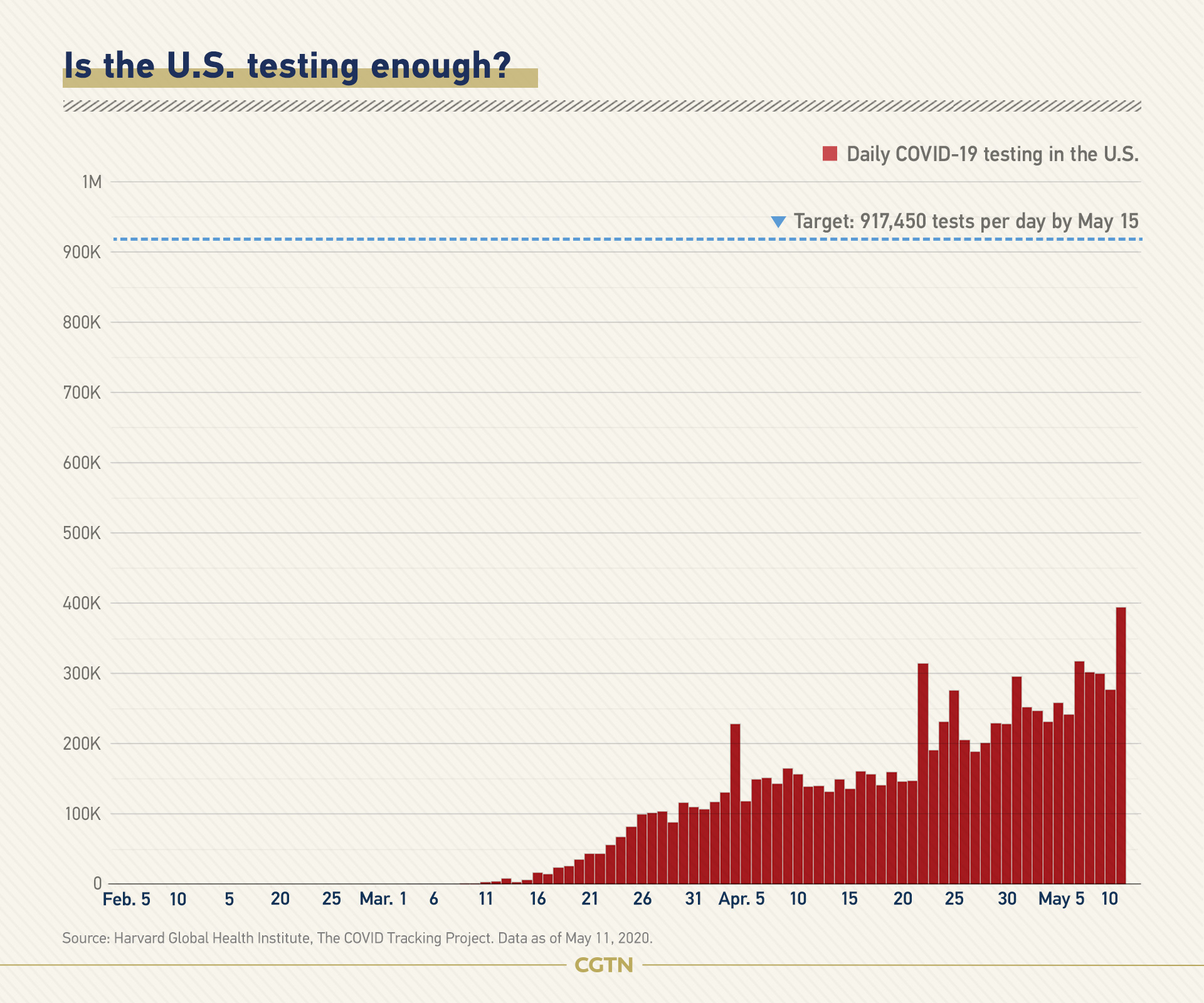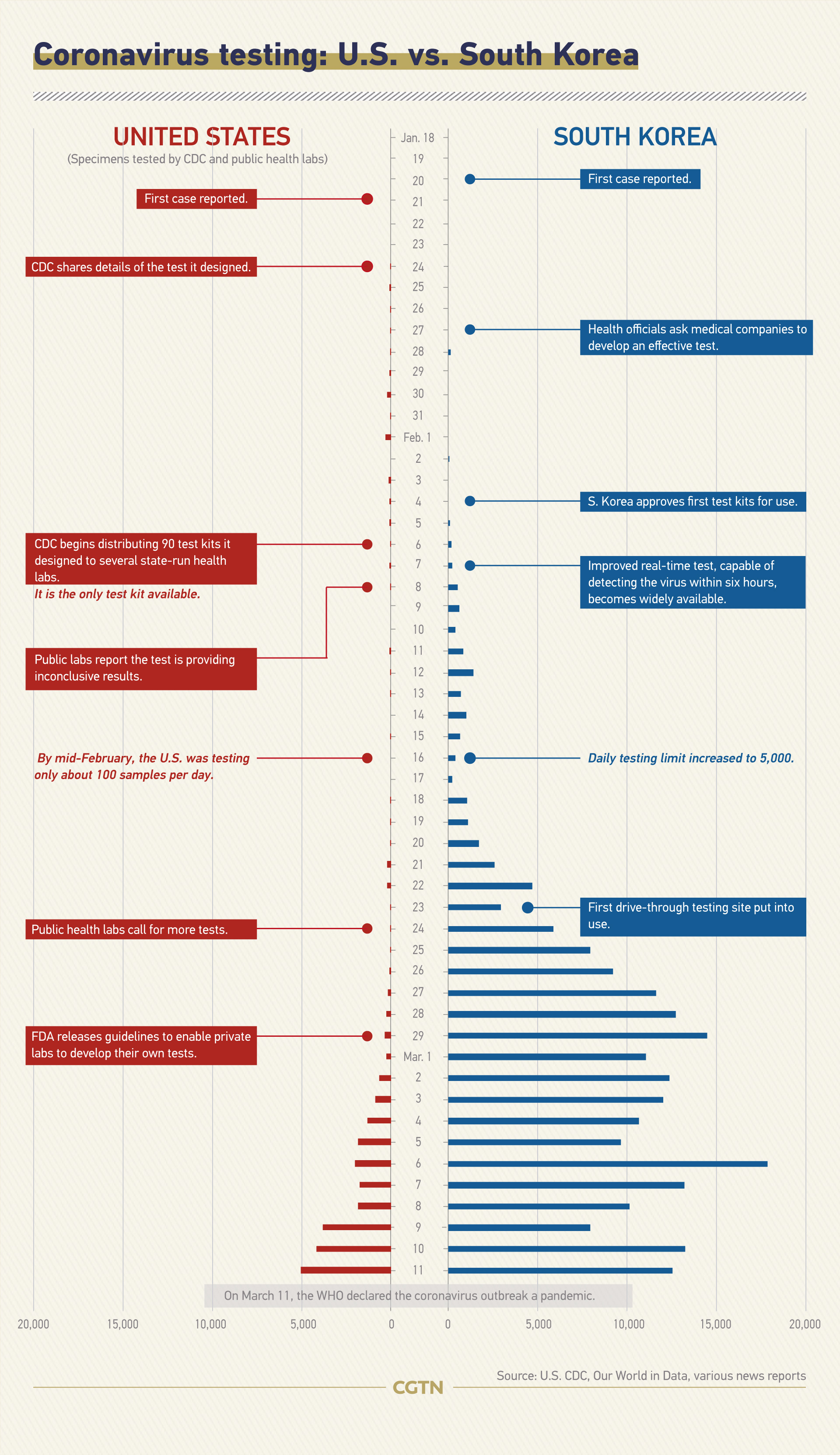Flanked by banners declaring "America leads the world in testing," U.S. President Donald Trump claimed at a Monday news conference that the country has "prevailed" on coronavirus testing.
The country has built "the most advanced and robust testing system anywhere in the world," he said.
The U.S. has indeed conducted more testing than anywhere else in the world, which is on track for 10 million tests this week. However, dozens of countries such as Italy, Germany, and Russia have tested a much larger share of their populations, according to data compiled by The COVID Tracking Project.

The White House boasted that the country has been conducting about 300,000 tests per day and the number will continue to rise substantially. But health researchers said that at least 900,000 daily tests are needed before the U.S. should reopen, more than the triple of the current figure.
Testing capability varies between states. Most of them, including and the hardest-hit states (such as New York, New Jersey, Connecticut, and Massachusetts) and the ones already lifting social distancing measures, are very far from the testing target, according to Harvard's Global Health Institute.
Now accounting for a third of the world's COVID-19 cases, the U.S. is still not running enough tests to stop the spread of the virus after weeks of delay.

The U.S. was supposed to be the best prepared for a global pandemic with its resources, expertise, and experience. Instead, it sustained the hardest blow.
The failure in the country's fight against the virus largely lay in its lapses in testing, which left the government blind to the outbreak's spread in the early stages.
Such delays were even more prominent when compared with South Korea, who reported the first case almost at the same time with the U.S. but conducted aggressive testing afterward.

In the early weeks of the coronavirus outbreak, both countries tried to develop their tests.
When South Korea began mass testing with its improved real-time diagnostics in early February, the U.S. public labs started to report that the testing kits provided by the U.S. Centers for Disease Control and Prevention (CDC) were giving "inconclusive results."
Only U.S. state labs were allowed to run tests at that time. The CDC also set the bar too high for whom can be tested – even sick people were denied access if their symptoms were mild.
By mid-February, the U.S. was testing only about 100 samples per day, meaning that merely around 1,000 people had been tested for the virus. South Korea had tested about 8,000 people during the same period.
It was not until the end of February that the U.S. Food and Drug Administration loosened restrictions to enable private labs to develop and conduct their tests.
Thus, most infections in the country spread undetected, leading to an exponential increase in cases. By contrast, South Korea soon flattened its infection curve.

The latest data shows that more than 1.35 million Americans have been infected, and over 80,000 have died. The virus claimed more American lives than the Vietnam, Afghanistan, and Iraq wars combined.
Though the U.S. has ramped up testing, it was far from enough. Still, the country is planning to reopen the economy risking a surge in cases.
On Monday, Trump repeated his claim from March 6 that "anybody that wants a test can get a test."
It was not true then, neither is this time.
(Graphics: Chen Yuyang, Feng Yuan)